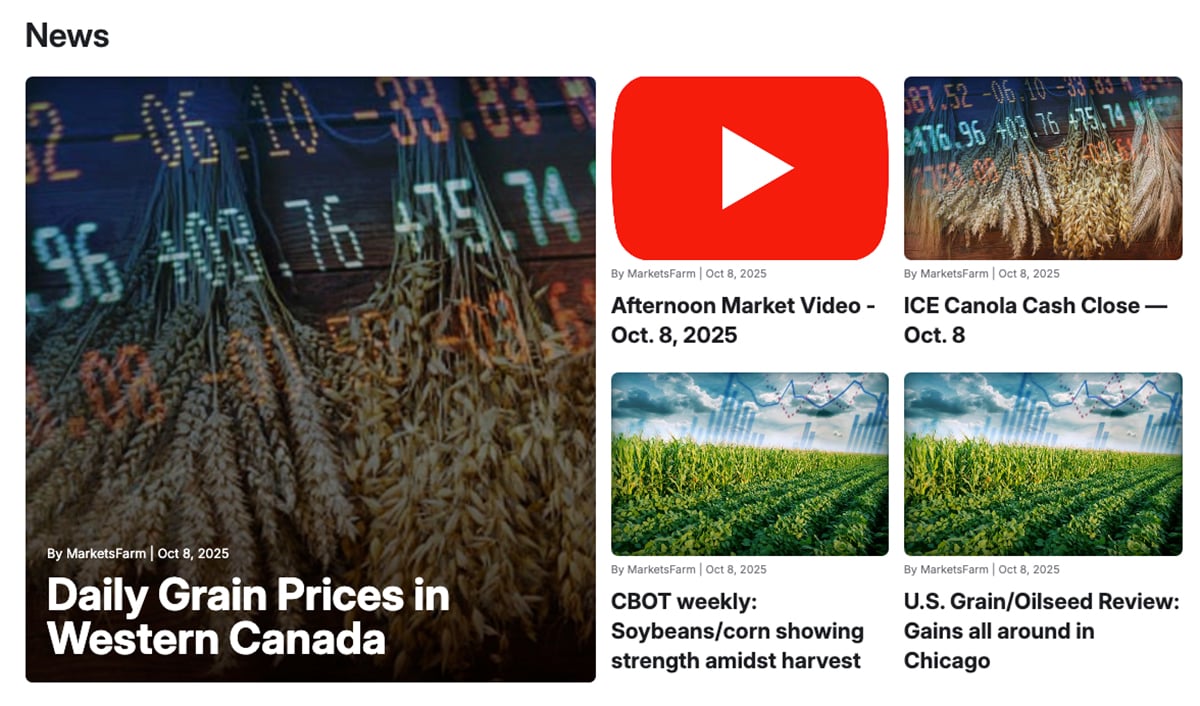This cattle market information is selected from the weekly report from Canfax, a division of the Canadian Cattle Association. More market information, analysis and statistics are available by becoming a Canfax subscriber by calling 403-275-5110 or at www.canfax.ca.
U.S. packer interest
Dressed sales last week were reported from $380-$390 per hundredweight delivered. In some cases, packers were paying a +$2 per cwt. dressed premium if cattle graded over 70 percent AAA.
Read Also

VIDEO: Catch up with the Western Producer Markets Desk
The Western Producer Markets Desk provides daily updates on agricultural markets, with recent video commentary including looks into canola, wheat, cattle and feed grains.
U.S. packer interest was noted, and light volumes of western Canadian fed cattle were marketed south. Cash sales to the United States were at a premium over local deals. A few cattle were also committed to U.S. packers priced on the five-area average.
Year-to-date western Canadian fed cattle slaughter volumes are one percent lower than last year, while Canadian fed cattle shipments to the U..S are up 21 percent compared to a year ago.
Given negative feeding margins, there is no incentive to pull fed calves forward and sell them ahead of schedule. The economics of adding weight to fed calves is still justifiable.
In Ontario, dressed sales were reported at $400 per cwt. delivered, fully steady with the previous week. Cattle were being booked for early April delivery.
In the U.S. fed market, dressed sales in Iowa and Nebraska ranged from US$294-$301 per cwt., $4 per cwt. higher than the previous week. Live sales in the northern feeding states were $187-$188 per cwt., $2-$5 per cwt. higher.
Live sales in Texas and Kansas were mostly at $186 per cwt., $1 per cwt. stronger. The all-fresh beef retail price for February was reported at $7.83 per lb., up two cents per lb. from January and eight percent higher than a year ago.
Cow prices rise
Alberta D2 cows were up $5 per cwt. last week to average $162.44. D3s averaged $141.11 and slaughter bulls averaged $168.14 per cwt.
On average, Alberta D2 cows have been trading at an $8 per cwt. discount to U.S. utility cows so far this year, but it narrowed to less than $1 per cwt. last week. Alberta cows have rallied 30 percent, while U.S. utility cows are up 21 percent since the start of the year.
Year-to-date Canadian cow slaughter is down nine percent from last year and down three percent from the five-year average. Only six of the last 14 years have been lower at this time of year. However, in the previous four weeks, weekly slaughter has been steady with year ago levels.
While weekly slaughter in the West was well below a year ago in the first six weeks of the year, it is now steady, and Eastern Canada has dropped below year-ago levels in the last three weeks.
Cows as a percentage of total slaughter averaged 17 percent year to date compared to 18 percent in the first quarter of 2023.
Feeder market optimism
The feeder market continues to be strong with support from the futures, lower feed costs and general optimism about the second half of the year.
Ontario feeders have been moving generally sideways for the last five weeks. Lightweight Alberta steers appear to have stabilized with 500-600 lb. animals trading between $420 and $440 per cwt. over the last four weeks.
Some price adjustments were seen on the heifer side last week with 500-800 lb. Alberta heifers down $1-$7 per cwt. Steer-to-heifer price spreads are driven by feed costs and performance differences in the feedlot. The adjustment on heifer prices is influenced by poor margin opportunities at the feedlot.
Statistics Canada reported 2024 crop planting intentions last week, with barley acreage expected to be down 2.5 percent to 7.1 million acres. Declines are expected across the Prairies. Oat acreage is expected to be up 21.6 percent to 3.1 million acres. Corn for grain is expected to be up 1.6 percent to 3.9 million acres.
The U.S. 550 lb. steer price last week was C$422 per cwt., while 850 lb. steers were $316. These prices are similar to Ontario, while the Alberta market has a slight premium. Based on the five-year average, U.S. prices could move sideways for the next four to six weeks.
Cut-out price rises
In U.S. beef trade, cutouts inched higher last week. Reduced packer kill rates in recent weeks provided moderate support to values. Choice averaged $310.78 per cwt. and Select averaged $301.69.
















